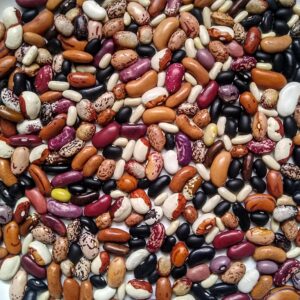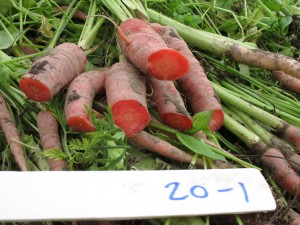
 Cross-posted from Seedstock.com
Cross-posted from Seedstock.com
According to a 2010 nationwide survey conducted by the Organic Seed Alliance (OSA), organic farmers are faced with a seed market that neither possesses sufficient available quantities of certified organic seed to meet demand nor the specific varieties of organic seed that they desire. As a result, many organic farmers have had to compensate by using conventionally bred seed varieties selected for use in high-input chemical farming systems in lieu of those specifically adapted to organic farming systems.
While the National Organic Program (NOP) currently allows growers to use conventional untreated seed to grow organic crops if an equivalent organically produced variety is not commercially available, that may soon change. Word on the street is that this loophole will eventually close and organic growers will only be able to use organic seed in order to maintain their organic certification. So the need to step up the production and development of more organic seed and seed varieties is essential for the future of organic farming.
Kristina Hubbard, director of advocacy and communications for OSA, whose mission is to support the ethical development and stewardship of the genetic resources of agricultural seed, says that organic seed availability is low as a result of reduced public funding for organic seed breeding programs and increased consolidation in the agricultural seed industry.
“Organic seed availability is low because there is little investment in these programs,” she says. “Research priorities have narrowed to focus on proprietary and profitable products that benefit larger industries, like agricultural biotechnology.”
To help increase the availability of organic seed and provide much needed research and information on plant variety performances under organic conditions, the Organic Seed Alliance (OSA) has teamed up with plant breeders, farmers and major universities in the Northern United States to form the Northern Organic Vegetable Improvement Collaborative, or NOVIC for short.
NOVIC’s stated objectives are to breed new seed varieties, identify the best performing varieties for organic agriculture, and educate farmers on organic seed production and plant variety improvement. Members of the collaborative include the Organic Seed Alliance (OSA), the U.S. Department of Agriculture, researchers and breeders from Washington State University, Oregon State University, University of Wisconsin–Madison and Cornell University, and assorted regional farmers. NOVIC is funded through the USDA-NIFA-OREI (Organic Research and Extension Initiative).
NOVIC’s organic breeding projects, which are currently underway in Minnesota, New York, Oregon, Washington and Wisconsin, focus on developing favorable season extending traits for the following five vegetable crops: broccoli, carrot, snap pea, sweet corn, and winter squash. According to the OSA website, NOVIC’s breeding goals with regard to these crops are as follows:
- Broccoli: Heat tolerance, marketable uniformity in an open-pollinated variety
- Carrot: Cold-tolerant, weed-competitive, ‘Nantes’ type
- Snap Pea: Heat-tolerant, disease resistant, stringless variety
- Sweet Corn: Good cold soil emergence in a sugar enhanced variety
- Winter Squash: Long term storability
Jim Myers, Professor of Horticulture at Oregon State University as well as the Project Director for NOVIC, says that a primary focus is on adapting these plant varieties to perform well in an organic environment.
“For conventional seed, you modify the environment. But with organic, you need a stable variety with the traits needed for adaptation to the growing conditions found on an organic farm,” says Myers. “You need plants that can withstand the constant evolution of diseases and pests, and you want to work on traits to make the crops efficient to harvest and increase nutritional value.”
As opposed to genetic engineering, which works at the cellular level in a lab, the NOVIC participants are using hand crossing methods in the field to conduct their breeding. In reference to the tools and techniques used in hand crossing, Myers explains, “it depends on the species as to what tools are used for crossing, but for most crops, a pair of forceps to remove the male parts in the flower you are crossing to, and tags to mark the flowers you have crossed is sufficient,” he said. “With the right knowledge, anyone can make crosses in any species; no specialized equipment is required.”
NOVIC will offer workshops to teach farmers more about these seed production techniques and how to improve plant varieties. The collaborative also plans to host regional field days where it will share the results of its variety trials with seed industry professionals, local farmers and researchers.
Hubbard says NOVIC will also enable farmers to “better meet compliance with organic regulations by identifying which organic varieties perform well in their region.”
With NOVIC in full swing, the initiative appears poised to accomplish its goals and provide a model that organic growers across the US can leverage and replicate to support the development and distribution of organic seed.
